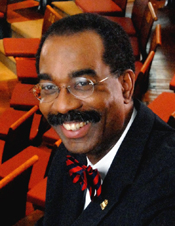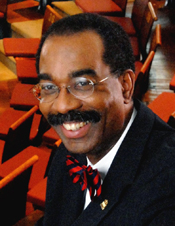 What’s on my mind is the School of Medicine’s long history in making major scientific discoveries which have led to significant advances in medicine and changed people’s lives.
What’s on my mind is the School of Medicine’s long history in making major scientific discoveries which have led to significant advances in medicine and changed people’s lives.
As America’s oldest public medical school, our students, faculty and leaders have made many discoveries that have dramatically and measurably impacted and improved human health. A handful of notable contributions include the following:
- In the first half of the nineteenth century, former School of Medicine Dean, Dr. Nathan Smith, invented the splint for leg fractures.
- In the early 1900s, Dr. James Carroll (class of 1891), helped identify the cause of yellow fever.
- In 1941, Dr. Theodore Woodward (class of 1938) showed that one dose of typhus vaccine was protective against the disease.
- Dr. John C. Krantz, Jr., head of Maryland’s department of pharmacology from 1932 to 1965, revolutionized the world-wide practice of anesthesiology.
- Drs. Myron Levine and James Kaper developed and tested the first live oral cholera vaccine in 1994.
- In 1994, the first aromatase inhibitors to treat breast cancer, developed by Dr. Angela Brodie, were released worldwide.
- In 2012, Drs. Stephen Bartlett and Rolf Barth led the team who completed the most extensive full-face transplant to date.
- An advisory committee for the U.S. Food and Drug Administration gave the “green light” to continue development of a drug to treat radiation exposure from a nuclear meltdown or terrorist attack, based on the research conducted by Ann Farese and Dr. Thomas MacVittie.
In this issue of the SOMnews, we celebrate another seminal contribution of a faculty member to medicine today: the discovery of HIV and its link to the causation of AIDS. This breakthrough was made by a research team led by Dr. Robert Gallo. As we commemorate the 30th anniversary of Dr. Gallo’s discovery, we reflect on some of the other major contributions his work has made to the field of human retroviruses, and specifically the fight against HIV/AIDS, in the
- Discovery of a factor released by T-cells that promotes growth of other T-cells, now known as interleukin-2 or IL-2, which would be essential to the subsequent discovery of all human retroviruses (including HIV). IL-2 revolutionized the T-cell biology field, and today it is used in therapies of cancer and in autoimmune diseases. (1976)
- Discovery of human T-cell leukemia virus-1 (HTLV-1), the first human retrovirus virus and one of the first viruses shown to cause human cancer (1980)
- Discovery of the second human retrovirus, HTLV-2 (1982)
- Co-discovery of the third known human retrovirus, HIV-1 (1984)
- Development of the HIV blood test, allowing healthcare workers to screen for the disease (1984)
- Discovery of chemokines that can block HIV and halt the progression of the virus into AIDS (1996)
- Establishment of the School of Medicine’s Institute of Human Virology, a cutting-edge, translational facility which combines basic research, clinical care and prevention to understand, treat and eradicate infectious diseases (1996)
- Co-founder of the Global Virus Network, headquartered at University of Maryland BioPark (2011)
- Current research on a vaccine candidate to prevent HIV transmission, lymphomas in HIV patients, and the launch of an HIV Cure group working on mechanisms to eradicate functional HIV activity from the human body (present day)
It is truly amazing to think that, within a person’s lifetime, HIV has gone from one of the most terrifying diseases of a generation to a chronic disease that can be controlled through the use of antiretroviral therapy. Although the virus affects more than 35 million people worldwide and remains a significant public health problem, HIV is no longer the “death sentence” it once was for millions of affected individuals. We have pioneering researchers, like Dr. Gallo, to thank for the incredible progress the biomedical field has made in terms of understanding, treating and preventing HIV/AIDS. However, we cannot fully grasp what an outstanding accomplishment it was to have discovered HIV without taking a brief moment to review the HIV/AIDS timeline.
When, in 1981, the CDC reported 270 cases of rare diseases, including Pneumocystis carinii pneumonia and Kaposi’s sarcoma, the cause of these infections was an enigma. By the following year, the U.S. Centers for Disease Control and Prevention (CDC) used the term “acquired immunodeficiency syndrome,” or AIDS, for the first time. The growing alarm over AIDS led Congress to allocate $15 million in funding to the CDC and the National Institutes of Health (NIH) to track the cases and study the disease, respectively. Although AIDS had only been observed in gay men living in major cities, in December 1982, the first case of AIDS in an infant who had received a contaminated blood transfusion was recorded. By 1983, cases of AIDS in women, intravenous drug users and hemophiliacs were identified.
No one knew how people were contracting AIDS, but it was clear that the disease was passed from person-to-person through sexual contact or contact with blood. Congress directed additional funds to the NIH to study the disease. This federal investment helped support the research of Dr. Gallo, who was then working at the NIH’s National Cancer Institute. The intense national and international interest in identifying the cause of AIDS paid off. In 1984, Dr. Gallo’s team discovered that AIDS was caused by a retrovirus which would become known as HIV and developed the HIV blood test.
Dr. Gallo’s work and that of other pioneering “virus hunters,” has made a significant impact on the burden of HIV/AIDS around the world. According to the World Health Organization, the number of AIDS-related deaths continues to decline from approximately 2.3 million people annually in 2005, to an estimated 1.6 million people in 2012. Not too many infectious diseases, which have deeply affected so many people on every continent in the world, arise and then are brought under control in such a short time. Many more barriers must be surmounted before we can fully eradicate HIV/AIDS, but we continue to move in the right direction, thanks, in large part, to the tireless and passionate efforts
I am continually reminded of all our exceptional faculty, staff, students and trainees and am humbled by their myriad of accomplishments. This month, we celebrate Dr. Gallo and his work in HIV/AIDS, but the same could be said of many of his esteemed colleagues. I am confident that we will continue to make extraordinary impacts in many more areas of human health and disease and look forward to celebrating those accomplishments in the near term.
In the relentless pursuit of excellence, I am
Sincerely yours,
E. Albert Reece, MD, PhD, MBA
Vice President for Medical Affairs, University of Maryland
John Z. and Akiko K. Bowers Distinguished Professor and
Dean, University of Maryland School of Medicine
We applaud our colleagues on their recent appointments!
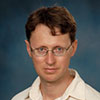 Ilia Baskakov, PhD, Professor, Department of Anatomy & Neurobiology, has been invited to serve as a member of the Biophysics of Neural Systems Study Section in the Center for Scientific Review at the National Institutes of Health (NIH).
Ilia Baskakov, PhD, Professor, Department of Anatomy & Neurobiology, has been invited to serve as a member of the Biophysics of Neural Systems Study Section in the Center for Scientific Review at the National Institutes of Health (NIH).
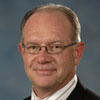 Gary Fiskum, PhD, the M. Jane Matjasko Professor for Research and Vice-Chair for Research in Anesthesiology, Department of Anesthesiology, has been appointed as a member of the Advisory Committee of the Research Center of Redox Processes in Biomedicine, in Sao Paolo, Brazil. Dr. Fiskum has also been appointed as the scientific advisor for the Pediatric Neurocritical Care Research Society.
Gary Fiskum, PhD, the M. Jane Matjasko Professor for Research and Vice-Chair for Research in Anesthesiology, Department of Anesthesiology, has been appointed as a member of the Advisory Committee of the Research Center of Redox Processes in Biomedicine, in Sao Paolo, Brazil. Dr. Fiskum has also been appointed as the scientific advisor for the Pediatric Neurocritical Care Research Society.
 Wendy Lane, MD, MPH, Clinical Associate Professor, Department of Epidemiology & Public Health, has been named Chair of the Child Abuse Special Interest Group for the American Pediatric Association.
Wendy Lane, MD, MPH, Clinical Associate Professor, Department of Epidemiology & Public Health, has been named Chair of the Child Abuse Special Interest Group for the American Pediatric Association.
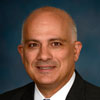 Elias Melhem, MD, Professor and Chair, has appointed the following faculty members as division chiefs in the Department of Diagnostic Radiology & Nuclear Medicine: Syed Ashruf, MD, Assistant Professor, Chief of Neuroradiology; Fred Moeslein, MD, PhD, Assistant Professor, Chief of Vascular/Interventional Radiology; and Clint Sliker, MD, Associate Professor, Chief of Trauma Radiology.
Elias Melhem, MD, Professor and Chair, has appointed the following faculty members as division chiefs in the Department of Diagnostic Radiology & Nuclear Medicine: Syed Ashruf, MD, Assistant Professor, Chief of Neuroradiology; Fred Moeslein, MD, PhD, Assistant Professor, Chief of Vascular/Interventional Radiology; and Clint Sliker, MD, Associate Professor, Chief of Trauma Radiology.
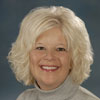 Denise Orwig, PhD, Associate Professor, Department of Epidemiology & Public Health, has been named a Health Sciences Fellow by The Gerontological Society of America (GSA), the nation’s oldest and largest interdisciplinary organization devoted to research, education, and practice in the field of aging, for her outstanding work in the field of gerontology.
Denise Orwig, PhD, Associate Professor, Department of Epidemiology & Public Health, has been named a Health Sciences Fellow by The Gerontological Society of America (GSA), the nation’s oldest and largest interdisciplinary organization devoted to research, education, and practice in the field of aging, for her outstanding work in the field of gerontology.
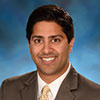 Devinder Singh, MD, Associate Professor, Department of Surgery, has been named chairman of the Maryland Board of Physicians.
Devinder Singh, MD, Associate Professor, Department of Surgery, has been named chairman of the Maryland Board of Physicians.
Kudos to our colleagues who are experts in their fields and give their all to represent the School of Medicine!
 D. Hunter Boggs, MD, Resident, Department of Radiation Oncology, was selected as a participant in the prestigious American Association for Cancer Research/American Society for Clinical Oncology “Educational Workshop on Methods in Clinical Cancer Research,” which was held in Vail, CO, from July 26–August 1. He was chosen on the basis of his submission of a protocol on “A Phase II Randomized, Double-Blind Placebo-Controlled, Single-Institution Study of the Effects of Oral Glyburide on Intracerebral Edema in Patients with Brain Metastases Receiving Stereotactic Radiosurgery Using Gamma Knife.”
D. Hunter Boggs, MD, Resident, Department of Radiation Oncology, was selected as a participant in the prestigious American Association for Cancer Research/American Society for Clinical Oncology “Educational Workshop on Methods in Clinical Cancer Research,” which was held in Vail, CO, from July 26–August 1. He was chosen on the basis of his submission of a protocol on “A Phase II Randomized, Double-Blind Placebo-Controlled, Single-Institution Study of the Effects of Oral Glyburide on Intracerebral Edema in Patients with Brain Metastases Receiving Stereotactic Radiosurgery Using Gamma Knife.”
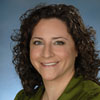 Rebecca Brotman, PhD, MPH, Assistant Professor, Department of Epidemiology & Public Health and the Institute for Genome Sciences, was an invited speaker at the 2014 American Urological Association (AUA) annual meeting on May 16, where she presented “An Untold Universe: The Vaginal Microbiome.” She also presented in the Basic Science Symposium on New Perspectives in Pelvic Health.
Rebecca Brotman, PhD, MPH, Assistant Professor, Department of Epidemiology & Public Health and the Institute for Genome Sciences, was an invited speaker at the 2014 American Urological Association (AUA) annual meeting on May 16, where she presented “An Untold Universe: The Vaginal Microbiome.” She also presented in the Basic Science Symposium on New Perspectives in Pelvic Health.
 Gary Fiskum, PhD, the M. Jane Matjasko Professor for Research and Vice-Chair for Research in Anesthesiology, Department of Anesthesiology, presented “Hyperoxic Versus Normoxic Resuscitation in a Rat Polytrauma Model of Traumatic Brain Injury Plus Hemorrhagic Shock” at the Annual Meeting of the National Neurotrauma Society in San Francisco in June 2014.
Gary Fiskum, PhD, the M. Jane Matjasko Professor for Research and Vice-Chair for Research in Anesthesiology, Department of Anesthesiology, presented “Hyperoxic Versus Normoxic Resuscitation in a Rat Polytrauma Model of Traumatic Brain Injury Plus Hemorrhagic Shock” at the Annual Meeting of the National Neurotrauma Society in San Francisco in June 2014.
 Paula Richley Geigle, PT, PhD, Adjunct Assistant Professor, Department of Neurology, was one of the presenters for the two-part course “Aquatic Exercise for Individuals with Spinal Cord Dysfunction: Clinical Guidelines, Didactic and In-Pool Experiences” at the 2014 American Spinal Injury Association Scientific Meeting, held in San Antonio, TX, from May 14–17. At the same conference, Dr. Geigle and Peter Gorman, MD, Associate Professor, were among the presenters on “Gastric Sleeve Surgery in a Person with Chronic Motor Incomplete Tetraplegia: A Clinical Case Report” and “Abdominal Adiposity, Insulin Resistance, and Prescribed Exercise for a Woman with Chronic Motor Incomplete Spinal Cord Injury: A Clinical Case Report.”
Paula Richley Geigle, PT, PhD, Adjunct Assistant Professor, Department of Neurology, was one of the presenters for the two-part course “Aquatic Exercise for Individuals with Spinal Cord Dysfunction: Clinical Guidelines, Didactic and In-Pool Experiences” at the 2014 American Spinal Injury Association Scientific Meeting, held in San Antonio, TX, from May 14–17. At the same conference, Dr. Geigle and Peter Gorman, MD, Associate Professor, were among the presenters on “Gastric Sleeve Surgery in a Person with Chronic Motor Incomplete Tetraplegia: A Clinical Case Report” and “Abdominal Adiposity, Insulin Resistance, and Prescribed Exercise for a Woman with Chronic Motor Incomplete Spinal Cord Injury: A Clinical Case Report.”
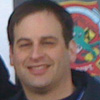 Benjamin Lawner, DO, MS, EMT-P, Assistant Professor, Department of Emergency Medicine, presented “The Emergency Department Management of Acutely Decompensated Heart Failure” at the Coastal Emergency Medicine Conference, held on Kiawah Island, SC, in early June. One hundred and fifty emergency physicians attended this joint conference of the Georgia, South Carolina, and North Carolina chapters of the American College of Emergency Physicians. Dr. Lawner and Andrew Bouland, MS-III, coordinated and led a training session in hands-only CPR at Baltimore’s City Hall on April 29. Among the students was Baltimore City Mayor Stephanie Rawlings-Blake. Video from the event is posted at www.youtube.com/watch?v=C0DXFBaCr1s.
Benjamin Lawner, DO, MS, EMT-P, Assistant Professor, Department of Emergency Medicine, presented “The Emergency Department Management of Acutely Decompensated Heart Failure” at the Coastal Emergency Medicine Conference, held on Kiawah Island, SC, in early June. One hundred and fifty emergency physicians attended this joint conference of the Georgia, South Carolina, and North Carolina chapters of the American College of Emergency Physicians. Dr. Lawner and Andrew Bouland, MS-III, coordinated and led a training session in hands-only CPR at Baltimore’s City Hall on April 29. Among the students was Baltimore City Mayor Stephanie Rawlings-Blake. Video from the event is posted at www.youtube.com/watch?v=C0DXFBaCr1s.
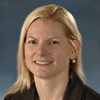 Andrea Meredith, PhD, Associate Professor, Department of Physiology, presented “Beyond Transcription: Identification of Novel Biophysical Mechanisms That Generate Daily Differences In SCN BK Currents” at the Society for Research on Biological Rhythms (SRBR) Annual Meeting in Big Sky, MT, on June 15.
Andrea Meredith, PhD, Associate Professor, Department of Physiology, presented “Beyond Transcription: Identification of Novel Biophysical Mechanisms That Generate Daily Differences In SCN BK Currents” at the Society for Research on Biological Rhythms (SRBR) Annual Meeting in Big Sky, MT, on June 15.
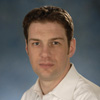 Emmanuel Mongodin, PhD, Assistant Professor, Department of Microbiology & Immunology and Institute for Genome Sciences, was an invited speaker at the NIH/NCI Experimental Transplantation & Immunology Branch weekly seminar on June 11, where he presented “The Human Microbiome in Health and Disease, and the Potential Impact on Personalized Medicine.”
Emmanuel Mongodin, PhD, Assistant Professor, Department of Microbiology & Immunology and Institute for Genome Sciences, was an invited speaker at the NIH/NCI Experimental Transplantation & Immunology Branch weekly seminar on June 11, where he presented “The Human Microbiome in Health and Disease, and the Potential Impact on Personalized Medicine.”
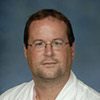 Robert Rogers, MD, Associate Professor, Department of Emergency Medicine, was a plenary speaker and faculty member for the General Practice Conference & Medical Exhibition (GP CME 2014), a conference for primary care physicians in New Zealand in mid-June. The event, held in Rotoru, was attended by 500 physicians, nurses, and practice managers. Dr. Rogers led a two-hour pre-conference workshop on the interplay between emergency medicine and primary care; presented a plenary session lecture on abdominal vascular emergencies; and led sessions on the topics of pulmonary embolism, vascular catastrophes, clinical decision making, and severe hypertension.
Robert Rogers, MD, Associate Professor, Department of Emergency Medicine, was a plenary speaker and faculty member for the General Practice Conference & Medical Exhibition (GP CME 2014), a conference for primary care physicians in New Zealand in mid-June. The event, held in Rotoru, was attended by 500 physicians, nurses, and practice managers. Dr. Rogers led a two-hour pre-conference workshop on the interplay between emergency medicine and primary care; presented a plenary session lecture on abdominal vascular emergencies; and led sessions on the topics of pulmonary embolism, vascular catastrophes, clinical decision making, and severe hypertension.
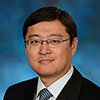 Hao Howard Zhang, PhD, Instructor, Department of Radiation Oncology, presented “Functional Imaging in Treatment Planning” and was a panelist at the Workshop on Intensity-Modulated Radiation Therapy at Lehigh University on May 10 and 11.
Hao Howard Zhang, PhD, Instructor, Department of Radiation Oncology, presented “Functional Imaging in Treatment Planning” and was a panelist at the Workshop on Intensity-Modulated Radiation Therapy at Lehigh University on May 10 and 11.
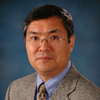 Richard Zhao, PhD, Professor, Department of Pathology, was invited to deliver a lecture on “Paradigm Shift: Molecular-Based Testing for Personalized Patient Care” at G2 Intelligence MDx Next: Molecular Diagnostics at the Crossroads—Innovation in the Face of a Reimbursement Crunch, held at the Royal Sonesta Harbor Court in Baltimore from June 11–13.
Richard Zhao, PhD, Professor, Department of Pathology, was invited to deliver a lecture on “Paradigm Shift: Molecular-Based Testing for Personalized Patient Care” at G2 Intelligence MDx Next: Molecular Diagnostics at the Crossroads—Innovation in the Face of a Reimbursement Crunch, held at the Royal Sonesta Harbor Court in Baltimore from June 11–13.
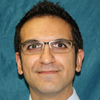 Four faculty members from the Department of Emergency Medicine participated in the 15th International Conference on Emergency Medicine, held in Hong Kong in early June. Haney Mallemat, MD, Assistant Professor, presented “From Zero to Hero: The Crashing Ventilated Patient.” Amal Mattu, MD, Professor, was the course director and co-presenter of an eight-hour Advanced Electrocardiography workshop. Terry Mulligan, DO, MPH, Clinical Associate Professor, was the director and a presenter of a two-day workshop on Advanced EM Administration and Management. He also presented “Global EM Development” and “Polypharmacy and the Geriatric Patient.” Veronica Pei, MD, MEd, MPH, Assistant Professor, presented the poster “Pre-hospital Care in Suburban China: Effect of International Collaborative Training on the Frequency of Critical Actions Performed,” chaired a poster session, and presented “Teaching the Millennials: What Happened to Respect and Dedication?”
Four faculty members from the Department of Emergency Medicine participated in the 15th International Conference on Emergency Medicine, held in Hong Kong in early June. Haney Mallemat, MD, Assistant Professor, presented “From Zero to Hero: The Crashing Ventilated Patient.” Amal Mattu, MD, Professor, was the course director and co-presenter of an eight-hour Advanced Electrocardiography workshop. Terry Mulligan, DO, MPH, Clinical Associate Professor, was the director and a presenter of a two-day workshop on Advanced EM Administration and Management. He also presented “Global EM Development” and “Polypharmacy and the Geriatric Patient.” Veronica Pei, MD, MEd, MPH, Assistant Professor, presented the poster “Pre-hospital Care in Suburban China: Effect of International Collaborative Training on the Frequency of Critical Actions Performed,” chaired a poster session, and presented “Teaching the Millennials: What Happened to Respect and Dedication?”
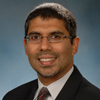 Members of the Department of Radiation Oncology were represented in 31 scientific talks and posters at the meeting of the American Association of Physicists in Medicine, held from July 20–24, in Austin, TX. Presenters included: Shifeng Chen, PhD, Assistant Professor; Heeteak Chung, PhD, Assistant Professor; Warren D’Souza, PhD, Professor; Steven Feigenberg, MD, Professor; Mariana Guerrero, PhD, Associate Professor; I. Lauren Jackson, PhD, Assistant Professor; Katja Langen, PhD, Associate Professor; Giovanni Lasio, PhD, Assistant Professor; Jolinta Lin, MD, Resident; Mu-Han Lin, PhD, Assistant Professor; Yanan Liu, PhD, Postdoctoral Fellow; Wei Lu, PhD, Associate Professor; Minesh Mehta, MB, ChB, Professor; Karen Mooney, PhD, Postdoctoral Fellow; Yildirim Mutaf, PhD, Associate Professor; Kruti Patel, MD, Resident; Jerimy Polf, PhD, Assistant Professor; Karl Prado, PhD, Professor; Adam Reese, MD, MS, Resident; William Regine, MD, Professor and Chair; Xiutao Shi, PhD, Postdoctoral Fellow; Huijun Xu, PhD, Resident; Ming Xue, PhD, Postdoctoral Fellow; Xiaocheng Yang, PhD, Resident; Byong Yong Yi, PhD, Professor; and Hao Zhang, PhD, Assistant Professor.
Members of the Department of Radiation Oncology were represented in 31 scientific talks and posters at the meeting of the American Association of Physicists in Medicine, held from July 20–24, in Austin, TX. Presenters included: Shifeng Chen, PhD, Assistant Professor; Heeteak Chung, PhD, Assistant Professor; Warren D’Souza, PhD, Professor; Steven Feigenberg, MD, Professor; Mariana Guerrero, PhD, Associate Professor; I. Lauren Jackson, PhD, Assistant Professor; Katja Langen, PhD, Associate Professor; Giovanni Lasio, PhD, Assistant Professor; Jolinta Lin, MD, Resident; Mu-Han Lin, PhD, Assistant Professor; Yanan Liu, PhD, Postdoctoral Fellow; Wei Lu, PhD, Associate Professor; Minesh Mehta, MB, ChB, Professor; Karen Mooney, PhD, Postdoctoral Fellow; Yildirim Mutaf, PhD, Associate Professor; Kruti Patel, MD, Resident; Jerimy Polf, PhD, Assistant Professor; Karl Prado, PhD, Professor; Adam Reese, MD, MS, Resident; William Regine, MD, Professor and Chair; Xiutao Shi, PhD, Postdoctoral Fellow; Huijun Xu, PhD, Resident; Ming Xue, PhD, Postdoctoral Fellow; Xiaocheng Yang, PhD, Resident; Byong Yong Yi, PhD, Professor; and Hao Zhang, PhD, Assistant Professor.
Congratulations to our very productive faculty on their recent grants and contracts!
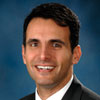 Michael Dimyan, MD, Assistant Professor, Department of Neurology, has been awarded a five-year, $919,970 Mentored Patient-Oriented Research Career Development Award (K23) by the National Institute of Neurological Disorders and Stroke (NINDS) for “Modulation of Interhemispheric Interactions and Arm Activity After Stroke.”
Michael Dimyan, MD, Assistant Professor, Department of Neurology, has been awarded a five-year, $919,970 Mentored Patient-Oriented Research Career Development Award (K23) by the National Institute of Neurological Disorders and Stroke (NINDS) for “Modulation of Interhemispheric Interactions and Arm Activity After Stroke.”
 Gary Fiskum, PhD, the M. Jane Matjasko Professor for Research and Vice-Chair for Research in Anesthesiology, Department of Anesthesiology, received a one-year, $292,139 award from the US Air Force Medical Service for “Prolongation of Platelet Storage Time by Protection Against Mitochondrial Energy Failure.”
Gary Fiskum, PhD, the M. Jane Matjasko Professor for Research and Vice-Chair for Research in Anesthesiology, Department of Anesthesiology, received a one-year, $292,139 award from the US Air Force Medical Service for “Prolongation of Platelet Storage Time by Protection Against Mitochondrial Energy Failure.”
 Claire Fraser, PhD, Professor, Department of Medicine, and Director, Institute for Genome Sciences (IGS); Owen White, PhD, Professor, Department of Epidemiology & Public Health and Associate Director, IGS; and David Rasko, PhD, Associate Professor, Department of Microbiology & Immunology, also with IGS, have been awarded a five-year, $15,214,315 grant from the National Institute of Allergy and Infectious Diseases (NIAID) to create the Genome Center for Infectious Diseases (GCID), a research center to apply genomic techniques to the study of pathogens and their hosts, and to expand understanding of the ways that pathogens can cause harm.
Claire Fraser, PhD, Professor, Department of Medicine, and Director, Institute for Genome Sciences (IGS); Owen White, PhD, Professor, Department of Epidemiology & Public Health and Associate Director, IGS; and David Rasko, PhD, Associate Professor, Department of Microbiology & Immunology, also with IGS, have been awarded a five-year, $15,214,315 grant from the National Institute of Allergy and Infectious Diseases (NIAID) to create the Genome Center for Infectious Diseases (GCID), a research center to apply genomic techniques to the study of pathogens and their hosts, and to expand understanding of the ways that pathogens can cause harm.
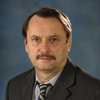 Horea Rus, MD, PhD, Professor, Department of Neurology, received a four-year, $600,000 Merit Review award from the Department of Veterans Affairs for “Role of RGC-32 in Gliosis.”
Horea Rus, MD, PhD, Professor, Department of Neurology, received a four-year, $600,000 Merit Review award from the Department of Veterans Affairs for “Role of RGC-32 in Gliosis.”
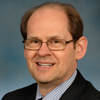 Marcelo Sztein, MD, Professor, Department of Pediatrics and Center for Vaccine Development (CVD), has been awarded a five-year, $13,494,225 competitive renewal of the NIH Research Project Cooperative Agreement (U19) entitled “Mucosal and Systemic Immunity, Vaccines and Microbiota Interplay in Humans.” The Cooperative Center for Human Immunology (CCHI) at the CVD is part of the National Institute of Allergy and Infectious Diseases (NIAID)’s CCHI Network. Its research will focus on furthering our understanding of the effector and regulatory immunological mechanisms elicited systemically and in the gastrointestinal mucosa elicited upon oral immunization with attenuated vaccines and/or challenge with wild-type enteric pathogens. Moreover, the CCHI multidisciplinary team of investigators will conduct pioneering studies on the interactions between the local intestinal microbiota and innate and adaptive immunity and the physiological consequences of the interaction between gut pathogens and the host. The award provides $1,928,484 in direct costs per year and involves prominent faculty in several other departments, as well, including Claire Fraser, PhD, Professor, Department of Medicine and Director of the Institute for Genome Sciences; Bruce Greenwald, MD, Professor, Department of Medicine; Owen White, PhD, Professor, Department of Epidemiology & Public Health and Director of Bioinformatics, Institute for Genome Sciences; Laurence Magder, PhD, Professor, Department of Epidemiology & Public Health; and Wilbur Chen, MD, Associate Professor, Department of Medicine.
Marcelo Sztein, MD, Professor, Department of Pediatrics and Center for Vaccine Development (CVD), has been awarded a five-year, $13,494,225 competitive renewal of the NIH Research Project Cooperative Agreement (U19) entitled “Mucosal and Systemic Immunity, Vaccines and Microbiota Interplay in Humans.” The Cooperative Center for Human Immunology (CCHI) at the CVD is part of the National Institute of Allergy and Infectious Diseases (NIAID)’s CCHI Network. Its research will focus on furthering our understanding of the effector and regulatory immunological mechanisms elicited systemically and in the gastrointestinal mucosa elicited upon oral immunization with attenuated vaccines and/or challenge with wild-type enteric pathogens. Moreover, the CCHI multidisciplinary team of investigators will conduct pioneering studies on the interactions between the local intestinal microbiota and innate and adaptive immunity and the physiological consequences of the interaction between gut pathogens and the host. The award provides $1,928,484 in direct costs per year and involves prominent faculty in several other departments, as well, including Claire Fraser, PhD, Professor, Department of Medicine and Director of the Institute for Genome Sciences; Bruce Greenwald, MD, Professor, Department of Medicine; Owen White, PhD, Professor, Department of Epidemiology & Public Health and Director of Bioinformatics, Institute for Genome Sciences; Laurence Magder, PhD, Professor, Department of Epidemiology & Public Health; and Wilbur Chen, MD, Associate Professor, Department of Medicine.
The Department of Physical Therapy & Rehabilitation Science has received a Maryland Health Personnel Shortage Incentive Grant for $40,500 from the Maryland Health Education Commission. The funds are to be used to expand or enhance programs in existing health shortage areas.
Congratulations to the following who have received honors!
 Laura Diegelmann, MD, RDMS, Clinical Assistant Professor, Department of Emergency Medicine, is a co-investigator for “The First Sonography in Hypotension and Cardiac Arrest in the Emergency Department (SHoC-ED 1)” Study, being conducted in Cape Town, South Africa. The investigative team’s first presentation of the study’s results at the annual conference of the Canadian Association of Emergency Physicians, held in Ottawa in June, won the Grant Innes Award for Top Research Abstract.
Laura Diegelmann, MD, RDMS, Clinical Assistant Professor, Department of Emergency Medicine, is a co-investigator for “The First Sonography in Hypotension and Cardiac Arrest in the Emergency Department (SHoC-ED 1)” Study, being conducted in Cape Town, South Africa. The investigative team’s first presentation of the study’s results at the annual conference of the Canadian Association of Emergency Physicians, held in Ottawa in June, won the Grant Innes Award for Top Research Abstract.
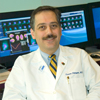 Vasken Dilsizian, MD, Professor, Department of Diagnostic Radiology & Nuclear Medicine, was selected by his peers as the winner of the 2014 Society of Nuclear Medicine and Molecular Imaging (SNMMI) Hermann Blumgart Award, which is the highest award and honor bestowed by the Cardiovascular Council of the Society of Nuclear Medicine. The election by the Board of Directors of the Cardiovascular Council is based on criteria including both scientific contributions to the field of cardiovascular nuclear medicine and service to the Cardiovascular Council. Dr. Dilsizian also delivered a lecture on “Scientific Progress through the Guidance and Wisdom of Mentors” at the SNMMI scientific session on June 8 in St. Louis, MO, where he was presented with his award.
Vasken Dilsizian, MD, Professor, Department of Diagnostic Radiology & Nuclear Medicine, was selected by his peers as the winner of the 2014 Society of Nuclear Medicine and Molecular Imaging (SNMMI) Hermann Blumgart Award, which is the highest award and honor bestowed by the Cardiovascular Council of the Society of Nuclear Medicine. The election by the Board of Directors of the Cardiovascular Council is based on criteria including both scientific contributions to the field of cardiovascular nuclear medicine and service to the Cardiovascular Council. Dr. Dilsizian also delivered a lecture on “Scientific Progress through the Guidance and Wisdom of Mentors” at the SNMMI scientific session on June 8 in St. Louis, MO, where he was presented with his award.
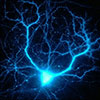 Curtis Gallagher, Graduate Student, Department of Physiology, was awarded the 2014 Glaser Prize in Imaging for his image of a hippocampal neuron in cell culture expressing cyan fluorescent protein. This prize was established to honor Dr. Edmund Glaser upon his retirement from the Department of Physiology in 1997. Dr. Glaser and his colleague, Dr. Hendrick Van der Loos, made a seminal contribution in the 1960s by creating the first computer-assisted neuron reconstruction system—Neurolucida. Dr. Glaser went on to found a company, MBF Bioscience, to further develop and market software for neuroscience imaging. The Glaser prize is awarded for the most visually attractive scientific image submitted by a student working in the laboratory of a faculty member in the Department of Physiology. All of the 2013 and 2014 submitted images are currently on display in the second-floor lobby of the SMC Campus Center.
Curtis Gallagher, Graduate Student, Department of Physiology, was awarded the 2014 Glaser Prize in Imaging for his image of a hippocampal neuron in cell culture expressing cyan fluorescent protein. This prize was established to honor Dr. Edmund Glaser upon his retirement from the Department of Physiology in 1997. Dr. Glaser and his colleague, Dr. Hendrick Van der Loos, made a seminal contribution in the 1960s by creating the first computer-assisted neuron reconstruction system—Neurolucida. Dr. Glaser went on to found a company, MBF Bioscience, to further develop and market software for neuroscience imaging. The Glaser prize is awarded for the most visually attractive scientific image submitted by a student working in the laboratory of a faculty member in the Department of Physiology. All of the 2013 and 2014 submitted images are currently on display in the second-floor lobby of the SMC Campus Center.
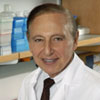 Robert Gallo, MD, the Homer & Martha Gudelsky Distinguished Professor in Medicine & Director, Institute of Human Virology, received his 32nd honorary doctorate degree in May from Marshall University in West Virginia.
Robert Gallo, MD, the Homer & Martha Gudelsky Distinguished Professor in Medicine & Director, Institute of Human Virology, received his 32nd honorary doctorate degree in May from Marshall University in West Virginia.
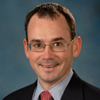 John LaMattina, MD, Assistant Professor, Department of Surgery, was named to The Daily Record’s “Influential Marylanders Under 40” list for his leadership of the living donor liver transplant program at the University of Maryland Medical Center.
John LaMattina, MD, Assistant Professor, Department of Surgery, was named to The Daily Record’s “Influential Marylanders Under 40” list for his leadership of the living donor liver transplant program at the University of Maryland Medical Center.
 Wendy Lane, MD, MPH, Clinical Associate Professor, Department of Epidemiology & Public Health, was awarded a 2014 Commissioner’s Award from the U.S. Department of Health and Human Services and their Children’s Bureau’s Office on Child Abuse and Neglect (OCAN). The Commissioner’s Awards honor one person from each state and U.S. territory for their exceptional contribution to the prevention and treatment of child abuse and neglect.
Wendy Lane, MD, MPH, Clinical Associate Professor, Department of Epidemiology & Public Health, was awarded a 2014 Commissioner’s Award from the U.S. Department of Health and Human Services and their Children’s Bureau’s Office on Child Abuse and Neglect (OCAN). The Commissioner’s Awards honor one person from each state and U.S. territory for their exceptional contribution to the prevention and treatment of child abuse and neglect.
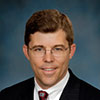 David Leeser, MD, Associate Professor, Department of Surgery, won the Rappel for Kidney Health Committee’s All-Star Award for his role as Revenue Chairman, in which he secured over $15,000 in new corporate sponsorships for the event, helping the National Kidney Foundation of Maryland to exceed all previous sponsorship levels in Rappel for Kidney Health history. Dr. Leeser also personally raised over $1,300 for the Rappel for Kidney Health event on June 10.
David Leeser, MD, Associate Professor, Department of Surgery, won the Rappel for Kidney Health Committee’s All-Star Award for his role as Revenue Chairman, in which he secured over $15,000 in new corporate sponsorships for the event, helping the National Kidney Foundation of Maryland to exceed all previous sponsorship levels in Rappel for Kidney Health history. Dr. Leeser also personally raised over $1,300 for the Rappel for Kidney Health event on June 10.
 T. Andrew Windsor, MD, Clinical Instructor, Department of Emergency Medicine, recently passed the examination requirements of the American Registry for Diagnostic Medical Sonography, certifying him as a registered diagnostic medical sonographer.
T. Andrew Windsor, MD, Clinical Instructor, Department of Emergency Medicine, recently passed the examination requirements of the American Registry for Diagnostic Medical Sonography, certifying him as a registered diagnostic medical sonographer.
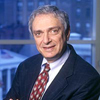 The article “Anatomy of Success: The Top 100 Cited Scientific Reports Focused on Hypertension Research” in Hypertension 63:641-647, 2014), cited three articles from the University of Maryland School of Medicine’s Department of Physiology, chosen from a field of more than 380,000 articles. It included a review and hypothesis by Mordecai Blaustein, PhD, in the American Journal of Physiology, 1977, 232:C165-C173 (#27; 1294 citations), and a research article by John Hamlyn, PhD, et al. in Nature, 1982, 300:650-652 (#92, 614 citations). Furthermore, Young and Galis’ “List of Top 100 ‘Original’ Articles in Hypertension Research” includes the aforementioned Hamlyn et al. article (#73) and another Hamlyn et al article from Proceedings of the National Academy of Sciences, USA, 88:6259-6263, 1991 (# 89; 561 citations). The three articles describe, respectively, the hypothesis that a novel ‘ouabain-like’ hormone plays a role in hypertension (1977); preliminary evidence for the hormone in human plasma (1982); and the purification, from human plasma, and identification of ‘endogenous ouabain’ (1991). Drs. Hamlyn and Blaustein, both professors in the Department of Physiology, are the only authors with two basic research studies on the latter list.
The article “Anatomy of Success: The Top 100 Cited Scientific Reports Focused on Hypertension Research” in Hypertension 63:641-647, 2014), cited three articles from the University of Maryland School of Medicine’s Department of Physiology, chosen from a field of more than 380,000 articles. It included a review and hypothesis by Mordecai Blaustein, PhD, in the American Journal of Physiology, 1977, 232:C165-C173 (#27; 1294 citations), and a research article by John Hamlyn, PhD, et al. in Nature, 1982, 300:650-652 (#92, 614 citations). Furthermore, Young and Galis’ “List of Top 100 ‘Original’ Articles in Hypertension Research” includes the aforementioned Hamlyn et al. article (#73) and another Hamlyn et al article from Proceedings of the National Academy of Sciences, USA, 88:6259-6263, 1991 (# 89; 561 citations). The three articles describe, respectively, the hypothesis that a novel ‘ouabain-like’ hormone plays a role in hypertension (1977); preliminary evidence for the hormone in human plasma (1982); and the purification, from human plasma, and identification of ‘endogenous ouabain’ (1991). Drs. Hamlyn and Blaustein, both professors in the Department of Physiology, are the only authors with two basic research studies on the latter list.
A job well done to all who have kept us in the media spotlight!
 Lynn Grattan, PhD, Associate Professor, Department of Neurology, is featured in the July/August issue of Monitor on Psychology, speaking about the University of Florida’s Healthy Gulf Healthy Communities project, part of the Deepwater Horizon Research Consortia on which she has been working.
Lynn Grattan, PhD, Associate Professor, Department of Neurology, is featured in the July/August issue of Monitor on Psychology, speaking about the University of Florida’s Healthy Gulf Healthy Communities project, part of the Deepwater Horizon Research Consortia on which she has been working.
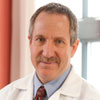 Jon Mark Hirshon, MD, MPH, PhD, Associate Professor, Department of Emergency Medicine, was a guest on radio station WTOP in Washington, DC, in May, discussing the effect of the Affordable Care Act on emergency medical care. Topics included the shortage of primary care physicians, access to care for the mentally ill, and the opportunity for federal policymakers to improve resource allocation through funding decisions. The information was based on data compiled in America’s Emergency Care Environment: A State-by-State Report Card, published by a task force that Dr. Hirshon chairs within the American College of Emergency Physicians.
Jon Mark Hirshon, MD, MPH, PhD, Associate Professor, Department of Emergency Medicine, was a guest on radio station WTOP in Washington, DC, in May, discussing the effect of the Affordable Care Act on emergency medical care. Topics included the shortage of primary care physicians, access to care for the mentally ill, and the opportunity for federal policymakers to improve resource allocation through funding decisions. The information was based on data compiled in America’s Emergency Care Environment: A State-by-State Report Card, published by a task force that Dr. Hirshon chairs within the American College of Emergency Physicians.
 Marcos Hsu, LAc, an acupuncturist in the Center for Integrative Health and Healing, the clinical practice of the School of Medicine’s Center for Integrative Medicine, was quoted in a MedPage Today article on “Arthritis Knee Pain Eased by Chinese Med.”
Marcos Hsu, LAc, an acupuncturist in the Center for Integrative Health and Healing, the clinical practice of the School of Medicine’s Center for Integrative Medicine, was quoted in a MedPage Today article on “Arthritis Knee Pain Eased by Chinese Med.”
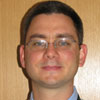 Raymond Pensy, MD, Assistant Professor, Department of Orthopaedics, was featured in the article “Medical Mysteries: For Seven Years, Searing Pain With No Relief” in The Washington Post Health & Science section on May 27.
Raymond Pensy, MD, Assistant Professor, Department of Orthopaedics, was featured in the article “Medical Mysteries: For Seven Years, Searing Pain With No Relief” in The Washington Post Health & Science section on May 27.
Hats off to those who have been published!
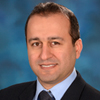 Farshad Adib, MD, Assistant Professor, Department of Orthopaedics, was among the co-authors on “Intraoperative Fat Embolism During Core Decompression and Bone Grafting for Osteonecrosis of the Hip: Report of 3 Cases and Literature Review” in the American Journal of Orthopedics, 2014 Jun;43(6):275-9.
Farshad Adib, MD, Assistant Professor, Department of Orthopaedics, was among the co-authors on “Intraoperative Fat Embolism During Core Decompression and Bone Grafting for Osteonecrosis of the Hip: Report of 3 Cases and Literature Review” in the American Journal of Orthopedics, 2014 Jun;43(6):275-9.
 Kelley Banagan, MD, Associate Professor, and Steven Ludwig, MD, Professor and Chief of Spine Surgery, both from the Department of Orthopaedics, co-authored “Thoracolumbar Spine Trauma,” a chapter in the book Minimally Invasive Spine Surgery: Surgical Techniques and Disease Management, published by Springer Science + Business Media in May 2014. Dr. Ludwig was also among the co-authors on “Lateral Mass Screw Fixation in the Cervical Spine,” a letter to the editor in Journal of Neurosurgery: Spine, 2014 May. He and Ebrahim Paryavi, MD, Chief Resident, and Daniel Gelb, MD, Associate Professor, were among the co-authors on “Implantable Direct Current Spinal Fusion Stimulators Do Not Decrease Implant-Related Infections in a Rabbit Model” in the American Journal of Orthopaedics, 2014 May;43(5):E98-E104.
Kelley Banagan, MD, Associate Professor, and Steven Ludwig, MD, Professor and Chief of Spine Surgery, both from the Department of Orthopaedics, co-authored “Thoracolumbar Spine Trauma,” a chapter in the book Minimally Invasive Spine Surgery: Surgical Techniques and Disease Management, published by Springer Science + Business Media in May 2014. Dr. Ludwig was also among the co-authors on “Lateral Mass Screw Fixation in the Cervical Spine,” a letter to the editor in Journal of Neurosurgery: Spine, 2014 May. He and Ebrahim Paryavi, MD, Chief Resident, and Daniel Gelb, MD, Associate Professor, were among the co-authors on “Implantable Direct Current Spinal Fusion Stimulators Do Not Decrease Implant-Related Infections in a Rabbit Model” in the American Journal of Orthopaedics, 2014 May;43(5):E98-E104.
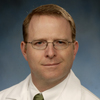 Uttam Bodanapally, MBBS, Assistant Professor; Jaroslaw Krejza, MD, PhD, Adjunct Professor; Clint Sliker, MD; Associate Professor, Lisa Miller, MD, Assistant Professor; Kathirkama Shanmuganathan, MBBS, Professor; and David Dreizin, MD, Assistant Professor, all from the Department of Diagnostic Radiology & Nuclear Medicine, were among the co-authors on “Predicting Arterial Injuries after Penetrating Brain Trauma Based on Scoring Signs from Emergency CT Studies” published in Neuroradiol Journal, 2014 Apr;27(2):138-45.
Uttam Bodanapally, MBBS, Assistant Professor; Jaroslaw Krejza, MD, PhD, Adjunct Professor; Clint Sliker, MD; Associate Professor, Lisa Miller, MD, Assistant Professor; Kathirkama Shanmuganathan, MBBS, Professor; and David Dreizin, MD, Assistant Professor, all from the Department of Diagnostic Radiology & Nuclear Medicine, were among the co-authors on “Predicting Arterial Injuries after Penetrating Brain Trauma Based on Scoring Signs from Emergency CT Studies” published in Neuroradiol Journal, 2014 Apr;27(2):138-45.
 D. Hunter Boggs, MD, Resident; Andrew Hanna, MS-III, and Mohan Suntharalingam, MD, Professor, all from the Department of Radiation Oncology, were among the co-authors on “Analysis of Pathological Complete Response Rates with Paclitaxel-Based Regimens in Trimodality Therapy for Esophageal Cancer” in Diseases of the Esophagus, 2014 May 26 [Epub ahead of print].
D. Hunter Boggs, MD, Resident; Andrew Hanna, MS-III, and Mohan Suntharalingam, MD, Professor, all from the Department of Radiation Oncology, were among the co-authors on “Analysis of Pathological Complete Response Rates with Paclitaxel-Based Regimens in Trimodality Therapy for Esophageal Cancer” in Diseases of the Esophagus, 2014 May 26 [Epub ahead of print].
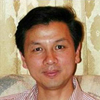 Kevin Chen, PhD, MPH, Associate Professor, Department of Family & Community Medicine and the Center for Integrative Medicine, was among the co-authors on “Reliability and Relatedness of Peak VO2 Assessments During Body Weight Supported Treadmill Training and Arm Cycle Ergometry in Individuals With Chronic Motor Incomplete Spinal Cord Injury” in Spinal Cord, 2014 Apr;52(4):287-91. He was also a co-author on “Scientific Basis of Mind-Body Interventions” in Evidence-Based Complementary and Alternative Medicine, 2014 Mar 5 [Epub].
Kevin Chen, PhD, MPH, Associate Professor, Department of Family & Community Medicine and the Center for Integrative Medicine, was among the co-authors on “Reliability and Relatedness of Peak VO2 Assessments During Body Weight Supported Treadmill Training and Arm Cycle Ergometry in Individuals With Chronic Motor Incomplete Spinal Cord Injury” in Spinal Cord, 2014 Apr;52(4):287-91. He was also a co-author on “Scientific Basis of Mind-Body Interventions” in Evidence-Based Complementary and Alternative Medicine, 2014 Mar 5 [Epub].
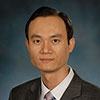 Rong Chen, PhD, Assistant Professor, and Edward Herskovits, MD, Professor, both from the Department of Diagnostic Radiology & Nuclear Medicine, were co-authors on “Examining the Multifactorial Nature of a Cognitive Process Using Bayesian Brain-behavior Modeling” in Computerized Medical Imaging & Graphics, 2014 May 10 [Epub ahead of print].
Rong Chen, PhD, Assistant Professor, and Edward Herskovits, MD, Professor, both from the Department of Diagnostic Radiology & Nuclear Medicine, were co-authors on “Examining the Multifactorial Nature of a Cognitive Process Using Bayesian Brain-behavior Modeling” in Computerized Medical Imaging & Graphics, 2014 May 10 [Epub ahead of print].
 Colleen Driscoll, MD, and Dina El Metwally, MD, both Assistant Professors, Department of Pediatrics, co-authored “A Daily Huddle Facilitates Patient Transports From A Neonatal Intensive Care Unit” in BMJ Quality Improvement Reports, 2014 Jun 13.
Colleen Driscoll, MD, and Dina El Metwally, MD, both Assistant Professors, Department of Pediatrics, co-authored “A Daily Huddle Facilitates Patient Transports From A Neonatal Intensive Care Unit” in BMJ Quality Improvement Reports, 2014 Jun 13.
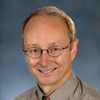 Richard Eckert, PhD, the John F. B. Weaver Professor and Chair; Maria Nurminskaya, PhD, Associate Professor; and Alexey Belkin, PhD, Assistant Professor, all from the Department of Biochemistry and Molecular Biology, were among the co-authors on “Transglutaminase Regulation of Cell Function” in Physiological Reviews, 2014 Apr;94(2):383-417.
Richard Eckert, PhD, the John F. B. Weaver Professor and Chair; Maria Nurminskaya, PhD, Associate Professor; and Alexey Belkin, PhD, Assistant Professor, all from the Department of Biochemistry and Molecular Biology, were among the co-authors on “Transglutaminase Regulation of Cell Function” in Physiological Reviews, 2014 Apr;94(2):383-417.
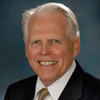 Ann Farese, MA, MS, Assistant Professor, and Thomas MacVittie, PhD, Professor, both from the Department of Radiation Oncology, were among the co-authors on “Development and Validation of a LC-MS/MS Assay for Quantitation of Plasma Citrulline for Application to Animal Models of the Acute Radiation Syndrome Across Multiple Species” in Analytical and Bioanalytical Chemistry, 2014 Jul;406(19):4663-75.
Ann Farese, MA, MS, Assistant Professor, and Thomas MacVittie, PhD, Professor, both from the Department of Radiation Oncology, were among the co-authors on “Development and Validation of a LC-MS/MS Assay for Quantitation of Plasma Citrulline for Application to Animal Models of the Acute Radiation Syndrome Across Multiple Species” in Analytical and Bioanalytical Chemistry, 2014 Jul;406(19):4663-75.
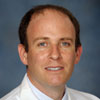 Steven Feigenberg, MD, Professor, Department of Radiation Oncology, was among the co-authors on “Reply to M. J. Brenner et al. and I.R. Vogelius et al.” in the Journal of Clinical Oncology, 2014 Jun 10;32:1853-1854.
Steven Feigenberg, MD, Professor, Department of Radiation Oncology, was among the co-authors on “Reply to M. J. Brenner et al. and I.R. Vogelius et al.” in the Journal of Clinical Oncology, 2014 Jun 10;32:1853-1854.
 Aletta Frazier, MD, Clinical Associate Professor; Jean Jeudy, MD, Associate Professor; Seth Kligerman, MD, Assistant Professor; and Charles White, MD, Professor, all from the Department of Diagnostic Radiology & Nuclear Medicine, were among the co-authors on “Aortic Arch Dissection: A Controversy of Classification” in Radiology, 2014 Jun;271(3):848-855.
Aletta Frazier, MD, Clinical Associate Professor; Jean Jeudy, MD, Associate Professor; Seth Kligerman, MD, Assistant Professor; and Charles White, MD, Professor, all from the Department of Diagnostic Radiology & Nuclear Medicine, were among the co-authors on “Aortic Arch Dissection: A Controversy of Classification” in Radiology, 2014 Jun;271(3):848-855.
 Lynn Grattan, PhD, Associate Professor, Department of Neurology, was among the co-authors on “The Resilience Activation Framework: A Conceptual Model of How Access to Social Resources Promotes Adaptation and Rapid Recovery in Post-Disaster Settings” in the Journal of Behavioral Health Services & Research, 2014 May 29 [Epub ahead of print].
Lynn Grattan, PhD, Associate Professor, Department of Neurology, was among the co-authors on “The Resilience Activation Framework: A Conceptual Model of How Access to Social Resources Promotes Adaptation and Rapid Recovery in Post-Disaster Settings” in the Journal of Behavioral Health Services & Research, 2014 May 29 [Epub ahead of print].
 Kim Hankey, PhD, Research Associate, Department of Radiation Oncology, was the senior author on “Changes in Polysialic Acid Expression on Myeloid Cells During Differentiation and Recruitment to Sites of Inflammation: Role in Phagocytosis” in Glycobiology, 2014 May 27 [Epub ahead of print].
Kim Hankey, PhD, Research Associate, Department of Radiation Oncology, was the senior author on “Changes in Polysialic Acid Expression on Myeloid Cells During Differentiation and Recruitment to Sites of Inflammation: Role in Phagocytosis” in Glycobiology, 2014 May 27 [Epub ahead of print].
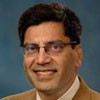 Syed Ashfaq Hasan, MD, Associate Professor, Department of Orthopaedics, was lead author on “’Zone of Vulnerability’ for Radial Nerve Injury: Anatomic Study” in the Journal of Surgical Orthopaedic Advances, 2014 Summer;23(2):105-10.
Syed Ashfaq Hasan, MD, Associate Professor, Department of Orthopaedics, was lead author on “’Zone of Vulnerability’ for Radial Nerve Injury: Anatomic Study” in the Journal of Surgical Orthopaedic Advances, 2014 Summer;23(2):105-10.
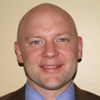 Theodore Manson, MD, Associate Professor, and Robert O’Toole, MD, Professor, both from the Department of Orthopaedics, were among the co-authors on “Non-operative Treatment of Intermediate Severity Lateral Compression Type 1 Pelvic Ring Injury with Minimally Displaced Complete Sacral Fracture” in the Journal of Orthopaedic Trauma, 2014 Apr 15 [Epub ahead of print].
Theodore Manson, MD, Associate Professor, and Robert O’Toole, MD, Professor, both from the Department of Orthopaedics, were among the co-authors on “Non-operative Treatment of Intermediate Severity Lateral Compression Type 1 Pelvic Ring Injury with Minimally Displaced Complete Sacral Fracture” in the Journal of Orthopaedic Trauma, 2014 Apr 15 [Epub ahead of print].
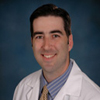 Joseph Martinez, MD, Assistant Professor, Department of Emergency Medicine, and Assistant Dean for Student Affairs, and Amal Mattu, MD, Professor and Vice Chairman, Department of Emergency Medicine, contributed the chapter on abdominal pain in the elderly to Geriatric Emergency Medicine: Principles and Practice, which was published by Cambridge University Press earlier this year.
Joseph Martinez, MD, Assistant Professor, Department of Emergency Medicine, and Assistant Dean for Student Affairs, and Amal Mattu, MD, Professor and Vice Chairman, Department of Emergency Medicine, contributed the chapter on abdominal pain in the elderly to Geriatric Emergency Medicine: Principles and Practice, which was published by Cambridge University Press earlier this year.
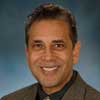 Minesh Mehta, MB, ChB, Professor, Department of Radiation Oncology, was among the co-authors on “Radiation-Induced Brain Damage, Impact of Robbins’ Work and the Need for Predictive Biomarkers” in the International Journal of Radiation Biology, 2014 Jun 25:1-11. [Epub ahead of print]. He was also a co-author on “Reply to M.C. Chamberlain” in the Journal of Clinical Oncology, 2014 May 20;32(15):1634-5; and on “It Is Time to Re-evaluate the Management of Patients With Brain Metastases” in Neurosurgery, 2014 Jul;75(1):1-9.
Minesh Mehta, MB, ChB, Professor, Department of Radiation Oncology, was among the co-authors on “Radiation-Induced Brain Damage, Impact of Robbins’ Work and the Need for Predictive Biomarkers” in the International Journal of Radiation Biology, 2014 Jun 25:1-11. [Epub ahead of print]. He was also a co-author on “Reply to M.C. Chamberlain” in the Journal of Clinical Oncology, 2014 May 20;32(15):1634-5; and on “It Is Time to Re-evaluate the Management of Patients With Brain Metastases” in Neurosurgery, 2014 Jul;75(1):1-9.
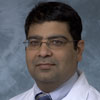 Timothy Miller, MD, Assistant Professor; Dheeraj Gandhi, MD, Professor; and Gaurav Jindal, MD, Assistant Professor, all from the Department of Diagnostic Radiology & Nuclear Medicine, were among the co-authors on “Advances in Multiple Sclerosis and its Variants: Conventional and Newer Imaging Techniques” in Radiologic Clinics of North America, 2014 Mar; 52(2): 321-36.
Timothy Miller, MD, Assistant Professor; Dheeraj Gandhi, MD, Professor; and Gaurav Jindal, MD, Assistant Professor, all from the Department of Diagnostic Radiology & Nuclear Medicine, were among the co-authors on “Advances in Multiple Sclerosis and its Variants: Conventional and Newer Imaging Techniques” in Radiologic Clinics of North America, 2014 Mar; 52(2): 321-36.
 Emmanuel Mongodin, PhD, Assistant Professor, Department of Microbiology & Immunology and the Institute for Genome Sciences, was among the co-authors on “The Potential Role of Lung Microbiota in Lung Cancer Attributed to Household Coal Burning Exposures” in Environmental and Molecular Mutanogenesis, 2014 Jun 3 2014 [Epub ahead of print]. He and Claire Fraser, PhD, Professor, Department of Medicine, and Director, Institute for Genome Sciences, were among the co-authors on “Culture-Independent Evaluation of the Appendix and Rectum Microbiomes in Children With and Without Appendicitis” in PLoS One, 2014 Apr 23;9(4):e95414.
Emmanuel Mongodin, PhD, Assistant Professor, Department of Microbiology & Immunology and the Institute for Genome Sciences, was among the co-authors on “The Potential Role of Lung Microbiota in Lung Cancer Attributed to Household Coal Burning Exposures” in Environmental and Molecular Mutanogenesis, 2014 Jun 3 2014 [Epub ahead of print]. He and Claire Fraser, PhD, Professor, Department of Medicine, and Director, Institute for Genome Sciences, were among the co-authors on “Culture-Independent Evaluation of the Appendix and Rectum Microbiomes in Children With and Without Appendicitis” in PLoS One, 2014 Apr 23;9(4):e95414.
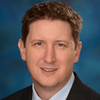 Jerimy Polf, MD, Assistant Professor, Department of Radiation Oncology, was among the co-authors on “Hyperthermia Sensitization and Proton Beam Triggered Liposomal Drug Release for Targeted Tumor Therapy” in Pharmaceutical Research, May 23 [Epub ahead of print].
Jerimy Polf, MD, Assistant Professor, Department of Radiation Oncology, was among the co-authors on “Hyperthermia Sensitization and Proton Beam Triggered Liposomal Drug Release for Targeted Tumor Therapy” in Pharmaceutical Research, May 23 [Epub ahead of print].
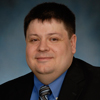 David Rasko, PhD, Associate Professor, Department of Microbiology & Immunology and the Institute for Genome Sciences, was among the co-authors on “AB5075, a Highly Virulent Isolate of Acinetobacter baumannii, as a Model Strain for the Evaluation of Pathogenesis and Antimicrobial Treatments” in MBio, 2014 May 27;5(3):e01076-14; and on “The Large-Scale Blast Score Ratio (LS-BSR) Pipeline: A Method to Rapidly Compare Genetic Content Between Bacterial Genomes” in Peer. 2014 Apr 1;2:e332.
David Rasko, PhD, Associate Professor, Department of Microbiology & Immunology and the Institute for Genome Sciences, was among the co-authors on “AB5075, a Highly Virulent Isolate of Acinetobacter baumannii, as a Model Strain for the Evaluation of Pathogenesis and Antimicrobial Treatments” in MBio, 2014 May 27;5(3):e01076-14; and on “The Large-Scale Blast Score Ratio (LS-BSR) Pipeline: A Method to Rapidly Compare Genetic Content Between Bacterial Genomes” in Peer. 2014 Apr 1;2:e332.
 Michael Rutenberg, MD, Resident, Department of Radiation Oncology, was the lead author on “Proton Therapy for Hodgkin Lymphoma” in Current Hematologic Malignancy Reports, 2014 May 20 [Epub ahead of print].
Michael Rutenberg, MD, Resident, Department of Radiation Oncology, was the lead author on “Proton Therapy for Hodgkin Lymphoma” in Current Hematologic Malignancy Reports, 2014 May 20 [Epub ahead of print].
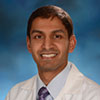 Narendra Shet, MD, Assistant Professor, Department of Diagnostic Radiology & Nuclear Medicine, was among the co-authors on “Imaging of Pediatric Pancreatic Neoplasms with Radiologic-Histopathologic Correlation” in AJR: American Journal of Roentgenology, 2014 Jun; 202 (6): 1337-48. Dr. Shet also contributed a chapter entitled “Arrhythmogenic Right Ventricular Dysplasia” in Cardiac Imaging (Rotations in Radiology), Oxford University Press, New York, 2014, pp 311-314.
Narendra Shet, MD, Assistant Professor, Department of Diagnostic Radiology & Nuclear Medicine, was among the co-authors on “Imaging of Pediatric Pancreatic Neoplasms with Radiologic-Histopathologic Correlation” in AJR: American Journal of Roentgenology, 2014 Jun; 202 (6): 1337-48. Dr. Shet also contributed a chapter entitled “Arrhythmogenic Right Ventricular Dysplasia” in Cardiac Imaging (Rotations in Radiology), Oxford University Press, New York, 2014, pp 311-314.
 Clint Sliker, MD, Associate Professor, Department of Diagnostic Radiology & Nuclear Medicine, was among the co-authors on “Blunt Cerebrovascular Injury Screening Guidelines: What Are We Willing to Miss?” in the Journal of Trauma and Acute Care Surgery, 2014 Mar;76(3):691-5.
Clint Sliker, MD, Associate Professor, Department of Diagnostic Radiology & Nuclear Medicine, was among the co-authors on “Blunt Cerebrovascular Injury Screening Guidelines: What Are We Willing to Miss?” in the Journal of Trauma and Acute Care Surgery, 2014 Mar;76(3):691-5.
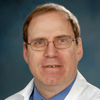 Charles White, MD, Professor, Department of Diagnostic Radiology & Nuclear Medicine, was among the co-authors on “Computed Tomographic Screening for Lung Cancer: Current Practice Patterns at Leading Academic Medical Centers” in JAMA Internal Medicine, 2014 Feb 1;174(2):286-287, and “MDCT Evaluation of Atherosclerotic Coronary Artery Disease: What Should Radiologists Know?” in the International Journal of Cardiovascular Imaging, 2014 Jun 30;Supplement 1:1-11.
Charles White, MD, Professor, Department of Diagnostic Radiology & Nuclear Medicine, was among the co-authors on “Computed Tomographic Screening for Lung Cancer: Current Practice Patterns at Leading Academic Medical Centers” in JAMA Internal Medicine, 2014 Feb 1;174(2):286-287, and “MDCT Evaluation of Atherosclerotic Coronary Artery Disease: What Should Radiologists Know?” in the International Journal of Cardiovascular Imaging, 2014 Jun 30;Supplement 1:1-11.

